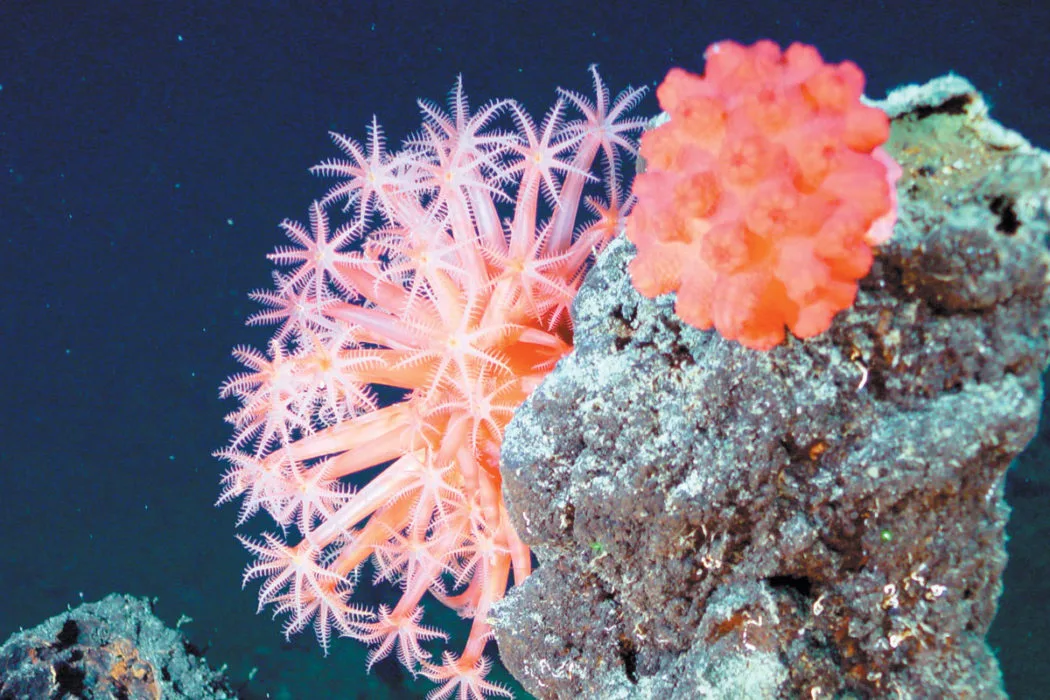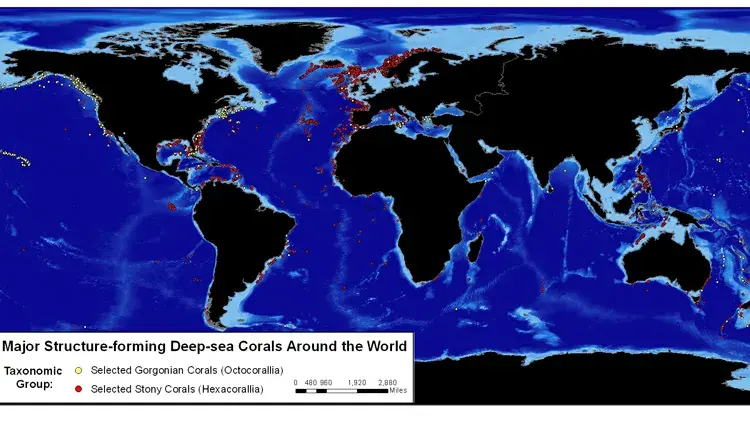Physical Address
304 North Cardinal St.
Dorchester Center, MA 02124

Beneath the icy waters of the world’s oceans, where sunlight barely penetrates and temperatures hover near freezing, lies one of nature’s hidden wonders—cold water coral reefs. These enigmatic ecosystems defy the traditional association of coral reefs with tropical waters, thriving in some of the most inhospitable environments on Earth. This article delves into the unique characteristics, ecological importance, and growing threats to cold water coral reefs.
Cold water coral reefs are primarily formed by species like Lophelia pertusa and Madrepora oculata. Unlike their warm-water counterparts, these corals do not rely on symbiotic algae (zooxanthellae) for energy. Instead, they capture nutrients directly from the surrounding water, feeding on plankton and organic detritus.

(Tauna Rankin, NOAA (map); Ocean Biogeographic Information System (OBIS), accessed February 9, 2011)
These reefs grow at depths ranging from 50 meters to over 2,000 meters, found in frigid waters from the North Atlantic to the Southern Ocean. They are often anchored to rocky seabeds, submerged cliffs, or even shipwrecks, forming intricate structures that support a wide array of marine life.
Cold water coral reefs are biological hotspots, providing habitat, feeding grounds, and nurseries for countless species. Crustaceans, fish, sponges, and mollusks are just a few of the organisms that thrive in these reefs.
The corals and associated species in cold water reefs exhibit remarkable adaptations to endure the challenges of their environment:
Despite their resilience, cold water coral reefs face numerous threats:
Recognizing the ecological and economic importance of cold water coral reefs, international organizations and governments have taken steps to protect them. Marine protected areas (MPAs) have been established in key locations, and technological advances in remote-operated vehicles (ROVs) are enabling detailed mapping and monitoring.
Additionally, sustainable fishing practices and international agreements like the Convention on Biological Diversity aim to curb destructive activities. However, much of the deep ocean remains unexplored, leaving many reefs vulnerable to unregulated exploitation.
Cold water coral reefs are a testament to life’s resilience, thriving in conditions once thought uninhabitable. Their ecological and scientific value is immeasurable, yet they remain one of the most underappreciated marine ecosystems. Protecting these reefs is not just an environmental imperative—it is a commitment to preserving biodiversity, supporting global fisheries, and unlocking potential scientific discoveries.
By fostering greater awareness and action, we can ensure that these hidden treasures continue to flourish beneath the freezing depths of the ocean.